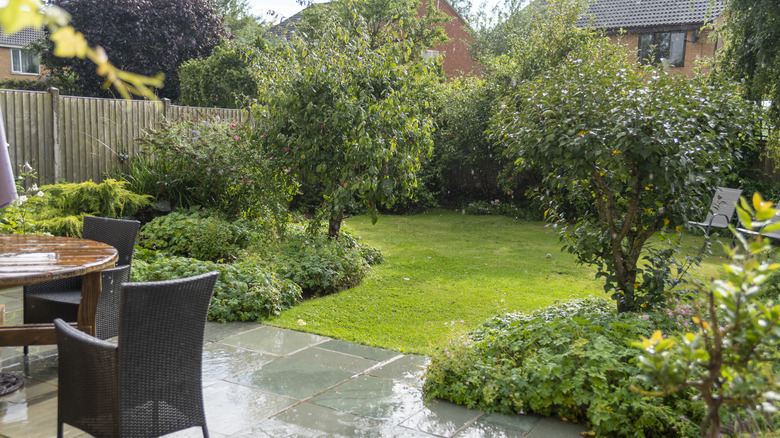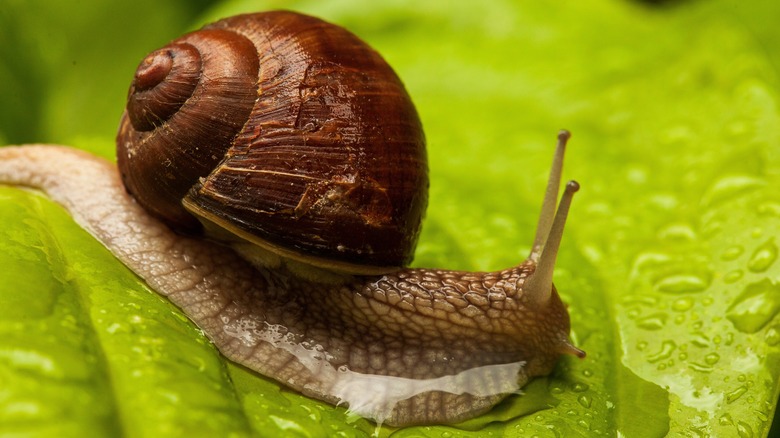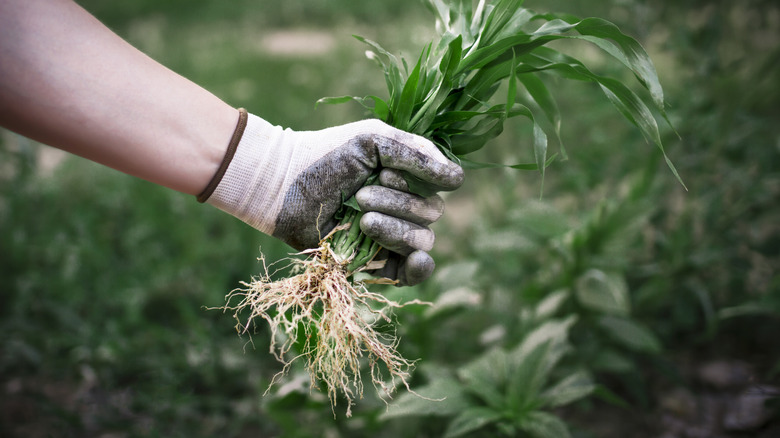Gardening Tasks That Are A Must After A Heavy Rain
After heavy rainfall, gardeners often say one of two things: "Phew, we really needed this," or, "When's the last time we had a day without rain?" Excess rainfall is often inevitable in many parts of the United States throughout different times of the year. And, whether the crops needed a good storm or not, there are many steps gardeners should take when the clouds blow over.
Once you're able to tend to your garden after the rain, there are a few things to check for. First and foremost, take a close look to see if any water-loving critters like snails or slugs have made their way into your garden. These unwelcomed guests will need to be removed as soon as possible. Shortly after a storm is also a great time to get rid of any weeds that have been accumulating in your garden. Because the soil is softer, you have a much better chance of removing these pesky plants in one piece.
Critter control
Snails and slugs rely on moisture to survive so, to them, there's nothing like a fresh rainstorm. While typically nocturnal, these gastropods will come out if there are wet and cloudy conditions during the day and feast on any garden greens they can find. Because of this, your plants are extremely vulnerable to these water-loving critters after a solid rainfall. But luckily, there is a simple and instantaneous solution.
While there are many ways to remove snails and slugs from your garden, there's nothing quicker and more immediately effective than removing them by hand. Search your garden's soil and the plants that reside there for unwanted guests, being sure to turn over leaves that they could be hiding under and munching on.
Once you've located the snails or slugs, use gloves or a shovel to carefully pick up the slimy creatures and put them in an open container like a bucket or cup. Place the container at least 20 feet away from your plants. This allows the gastropods to exit on their own and should result in a permanent eviction from your growing garden. Just be sure to go back and grab the container once everyone has moved out.
Weed maintenance
Much like the slugs and snails that have been lingering around your plants, it's easiest to remove pesky weeds from your garden after a rainstorm. This is because the soil is much softer when completely moistened, allowing deep roots to come up with little to no fight. Depending on the weed, some will come out with minimal effort, while others may put up a decent fight. However, if the soil is soaked down to the weeds' roots, you should be able to fully remove each plant.
Put on your garden gloves and carefully pull each weed from the base. This is also a great time to remove any branches, sticks, and debris that may have blown into your garden. If needed, get a brown bag or another vessel to put your removed weeds and other debris in. That way, you'll be able to easily dispose of them with the rest of your vegetative waste.


